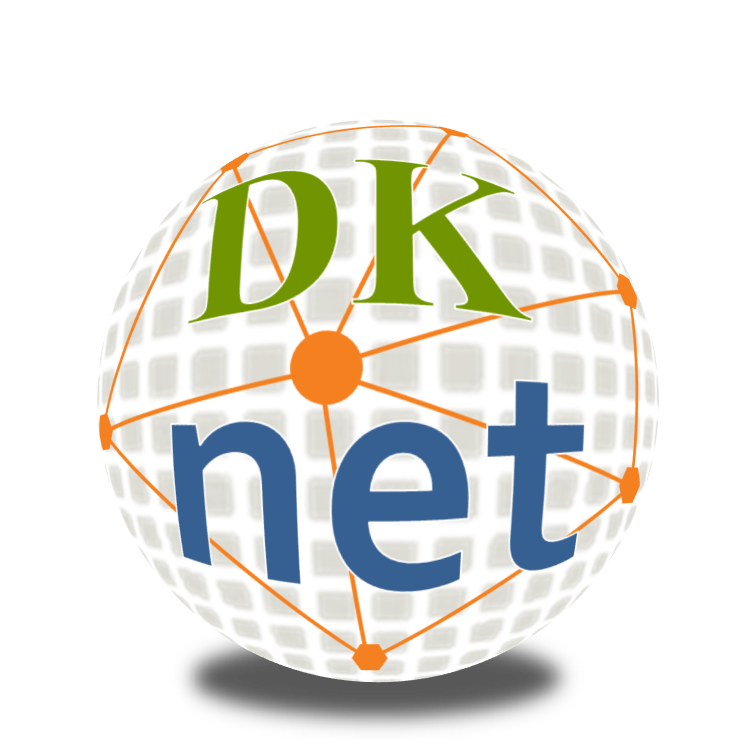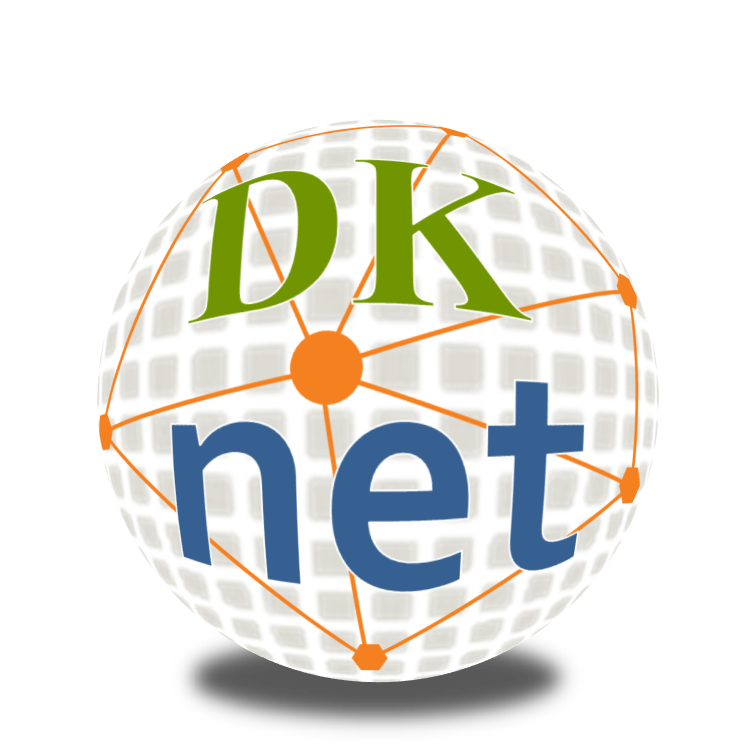Leaving Community
Are you sure you want to leave this community? Leaving the community will revoke any permissions you have been granted in this community.
 Signaling Pathways Project (SPP) Tutorial
Signaling Pathways Project (SPP) Tutorial
Introduction:
The Signaling Pathways Project (SPP) is a FAIR data environment for hypothesis generation using public transcriptomic and ChIP-Seq datasets. It incorporates a powerful meta-analysis platform that surveys across millions of biocurated 'omics data points to make high-confidence connections between signaling pathways and their transcriptional targets. The site accommodates both standalone “idea-only” hypothesis generation as well as custom gene list upload.
dkNET Webinar: The Signaling Pathways Project, An Integrated ‘Omics Knowledgebase
In this webinar, attendees will learn how to use biocuration and consensomic analysis of 'omics data to model mammalian cellular signaling events in organs and intersections between cellular signaling pathways and disease, and identify node-gene target regulatory relationships previously uncharacterized in the research literature. The webinar was presented by Drs. Scott Ochsner and Neil Mckenna
Tutorial That Has Been Selected For You:
|
What hypothesis are you developing or what information are you looking for? Evidence for signaling nodes that regulate my biological process of interest |
The hypothesis generation examples that you selected: Transcriptomic evidence for regulation of human cell cycle genes by FGF receptor signaling |
Learning Goals:
Identify genes that are regulated by a specific signaling pathway using SPP Ominer
-
Learn how to do SPP queries based on the hypothesis that you are developing or the evidence that you are looking for, including:
Searches SPP for data points from transcriptomic (expression array or RNA-Seq) or cistromic datasets
Filters the results
Returns the results in the form of an SPP Regulation Report
Learn how to view results
Tutorial Lesson:
STEP 1: First let’s open a new window with the Signaling Pathways Project
In this example tutorial, we will build an SPP query that will gather evidence for FGF receptor transcriptional regulation of the cell cycle that is currently uncharacterized in the research literature. You can link to the results of the query here, but we will walk you through the steps so that you can learn how to build a query for your own hypothesis of interest.
Background
Ligands for members of the the FGF receptor family are mitogens in a wide variety of cells. Although some evidence for the transcriptional mechanisms involved have been elucidated, we can use archived ‘omics datasets to discover evidence for additional mechanisms that are not yet characterized in the research literature.


To make it easier to walk through the tutorial, please launch a new window
STEP 2: Go to Ominer.
Ominer is the Signaling Pathways Project (SPP) query interface. Four types of target gene queries are currently available in SPP Ominer. All queries can be submitted as either transcriptomic or cistromic queries.
Single Gene Single gene queries are designed for researchers who wish to evaluate transcriptomic or cistromic evidence for regulation of a single target gene of interest across all nodes, or within specific categories, classes or families.
Gene Ontology (GO) term GO uses evidence from the research literature to link genes to specific cellular biological processes and functions. In doing so, GO enables biologists to go beyond single target genes to generate hypotheses using familiar biological terms that encompass numerous independent genes. Ominer identifies evidence for transcriptional regulation of GO term genes by members of a specified class of pathway node.
Consensome SPP maintains rankings for genes based on the inferred computed strength of their regulatory relationship with a given signaling node or node family. These rankings are referred to as “consensomes”.
Custom gene list A user can submit a custom list of up to 500 approved gene symbols or Entrez GeneIDs. Ominer will return evidence for their transcriptional regulation of GO term genes by members of a specified class of pathway node.
Learn more about SPP Ominer target gene queries in the introductory article in Scientific Data.

STEP 3: The first thing one needs to do within the SPP Ominer is to tell how SPP Ominer selects your ‘Target gene(s) of interest’ from the drop-down list. In this tutorial we will be selecting Gene Ontology Term.
Target gene(s) of interest
STEP 4: Next, you will need to select an ‘Omics Category based on your interest (default is transcriptomic). The Omics Category can be transcriptomics (expression array or RNA-Seq) or cistromics (ChIP-Seq) data. For this tutorial, please select Transcriptomics.
The transcriptional functions of signaling pathway nodes are studied using one of two types of methodology:
Transcriptomic datasets report on direct or indirect effects of nodes on gene expression using, e.g. expression arrays or high throughput sequencing-based approaches such as RNA-Seq or scRNA-Seq. They can be used to study all nodes but are typically used to study transcriptional biology of membrane bound receptors, transporters, ion channels and cytoplasmic enzymes & nodes.
Cistromic datasets report on node regulation of gene expression through direct protein-DNA interactions, sometimes referred to as trans) using, e.g. ChIP-Seq. They are typically used to study transcription factors, epigenetic regulatory enzymes, nuclear receptors & other DNA/chromatin-binding nodes.
Learn more about SPP biocuration of transcriptomic and cistromic datasets in the introductory article in Scientific Data
Omics Category
STEP 5: Since you have selected Gene Ontology Term above you must now enter your gene ontology term of interest.
You can browse lists of GO terms for molecular function, biological process and cellular component on the MGI website. In this tutorial, we will specify "cell cycle".
Start typing some text and select from the drop down suggestions.
Enter a GO term below
STEP 6: Next, we will configure the Signaling Pathways Module Family.
SPP combines existing, well-established vocabularies and terminologies into a single classification of signaling pathway nodes based around four top-level categories:
Receptors Based on the International Union of Pharmacology (IUPHAR) Guide To Pharmacology classification (website | citation)
Enzymes Based on the International Union Of Biochemistry And Molecular Biology (IUBMB) Nomenclature Committee classification (website | citation)
Transcription Factors Based on the TFClass terminology (website | citation)
Co-nodes Based on SPP’s own annotations and those of the Human Genome Organization Gene Nomenclature Committee (HGNC) (website | citation)
Learn more about SPP signaling node classification in the introductory article in Scientific Data.
To prevent the submission of very large queries that might impact the performance for other users, GO term queries require the user to specify at least a Class from the Signaling Pathways Module menu.
In this tutorial, we will be selecting Receptors, Catalytic receptors, and Fibroblast growth factor receptors.
Signaling Pathway Module Category
STEP 7: You will select a Biosample Category including Species, Physiological System and/or Organ of interest.
The default settings are recommended since these will return the most data points for a given query.
In this tutorial, we will be selecting Human and All Physiological Systems.
Biosample Category
STEP 8: Next you will be selecting an FDR Significance Cut-off, which determines the confidence level of the results of your query. FDR correction adjusts experiment p-values to account for the potential for a certain number of significant p-values to occur by chance.
The smaller the FDR value, the higher the confidence for the data point. The default FDR setting is 5E-02, which can be decreased to a more stringent value, e.g, 1E-02 or lower, to reduce the number of data points returned.
In this tutorial, we will be selecting 5E-02
FDR Significance cut-off
STEP 9: Now you can submit your query by clicking the "Submit" button.
STEP 10: Interpreting the results?
SPP will return a Regulation Report for your target gene of interest.
Depending on whether you select Transcriptomic or Cistromic as the ‘Omics Category, the Regulation Report is a detailed synopsis of
The signaling pathway nodes whose genetic or pharmacological manipulation impacts expression of your target gene(s) of interest (Transcriptomic Reports); or
The signaling pathway nodes that bind within -/+ 10 kb of the transcription start site of your target gene(s) of interest (Cistromic/ChIP-Seq reports).
The Regulation Report allows users to hypothesize candidate signaling pathways regulating their target gene(s) of interest.
Learn more about SPP Ominer Regulation Reports in the introductory article in Scientific Data.
For this tutorial, the Regulation Report showing list of genes mapped to the GO term “cell cycle” and their data points from SPP-curated transcriptomic experiments involving genetic or pharmacological perturbation of a member of the human FGF receptor family.
For multi-gene queries (GO term or custom list), the default display is by Target. This can be changed to Pathway Module Category, Biosample or Species using the drop-down in the top left.
In this tutorial, we will select Display by: Category.
TRANSCRIPTOMIC REPORTS The horizontal axis is the transcript relative abundance (fold change). The vertical axis indicates the Category, Class and Family of the manipulated node. The bottom level labels indicate any genetic (in italics, e.g. overexpression, knockdown) or pharmacological (in bold, e.g. BSM administration) node manipulations.
An example of transcriptomic reports

Data points in Regulation Reports are fully interactive. Click on any data point to see its details, and to navigate to a page describing the experiment, as well as a link to the full dataset page.
In the results of this example use case, we can see that genes encoding many key cell cycle regulators, including AURKA, FOXM1, PIM1, CCND2, CDC20 and CDC23, are all downregulated when cells are treated with the FGF receptor inhibitor PD074. This indicates that these genes are transcriptionally induced in response to FGF receptor signaling.
Summary of hypothesis:
Our hypothesis is that FGF receptor signaling transcriptionally induces numerous genes with critical roles in driving cell cycle progression. To hypothesize transcription factors that regulate expression of these genes in response to FGFR signaling, you can carry out a Single Gene search for ChIP-Seq data points relevant to each gene.
Reference
Section 1. SPP UI walk-through:1B- 1E, p5-11 in the supplement:
https://static-content.springer.com/esm/art%3A10.1038%2Fs41597-019-0193-4/MediaObjects/41597_2019_193_MOESM1_ESM.pdf




